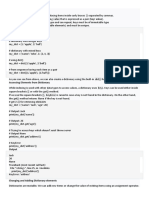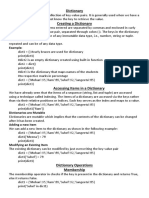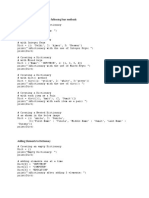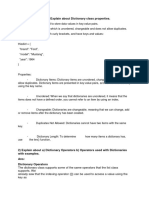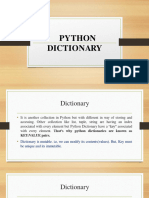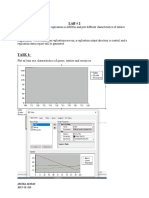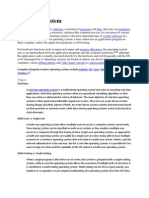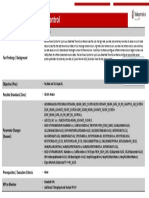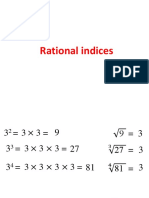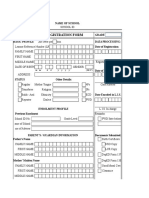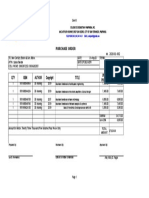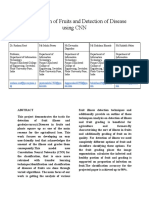0% found this document useful (0 votes)
20 views4 pagesDictonary & Build Methods
The document provides an overview of Python dictionaries, detailing their structure as mutable, unordered collections of key-value pairs. It explains how to create, access, modify, and remove elements, as well as methods for looping through dictionaries and built-in functions like clear(), copy(), and update(). Overall, it emphasizes the flexibility and efficiency of dictionaries in data manipulation.
Uploaded by
rj0110865Copyright
© © All Rights Reserved
We take content rights seriously. If you suspect this is your content, claim it here.
Available Formats
Download as DOCX, PDF, TXT or read online on Scribd
0% found this document useful (0 votes)
20 views4 pagesDictonary & Build Methods
The document provides an overview of Python dictionaries, detailing their structure as mutable, unordered collections of key-value pairs. It explains how to create, access, modify, and remove elements, as well as methods for looping through dictionaries and built-in functions like clear(), copy(), and update(). Overall, it emphasizes the flexibility and efficiency of dictionaries in data manipulation.
Uploaded by
rj0110865Copyright
© © All Rights Reserved
We take content rights seriously. If you suspect this is your content, claim it here.
Available Formats
Download as DOCX, PDF, TXT or read online on Scribd
/ 4











